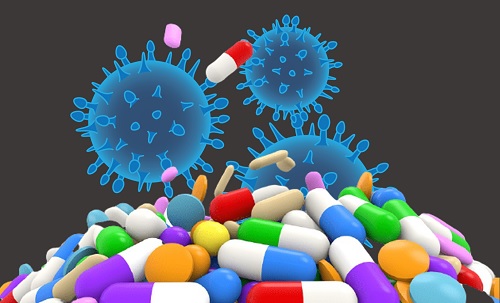N.B. Nair
New Delhi (ISJ): More than 1.2 million people – and potentially millions more, died in 2019 as a direct result of antibiotic-resistant bacterial infections, according to the most comprehensive estimate to date of the global impact of antimicrobial resistance (AMR).
The analysis of 204 countries and territories, published in The Lancet, reveals that AMR is now a leading cause of death worldwide, higher than HIV/AIDS or malaria. It shows many hundreds of thousands of deaths now occur due to common, previously treatable infections – such as lower respiratory and bloodstream infections – because the bacteria that cause them have become resistant to treatment.
The report highlights an urgent need to scale up action to combat AMR, and outlines immediate actions for policymakers that will help save lives and protect health systems. These include optimising the use of existing antibiotics, taking greater action to monitor and control infections, and providing more funding to develop new antibiotics and treatments.
The co-author of the Study, Professor Chris Murray, of the Institute for Health Metrics and Evaluation at the University of Washington, USA, said: “These new data reveal the true scale of antimicrobial resistance worldwide, and are a clear signal that we must act now to combat the threat. Previous estimates had predicted 10 million annual deaths from antimicrobial resistance by 2050, but we now know for certain that we are already far closer to that figure than we thought."
Estimates of the health impacts of AMR have been published for several countries and regions, and for a small number of pathogen-drug combinations in a wider range of locations. However, until now no estimates have covered all locations and a broad range of pathogens and drug combinations.
The new Global Research on Antimicrobial Resistance (GRAM) report estimates deaths linked to 23 pathogens and 88 pathogen-drug combinations in 204 countries and territories in 2019. Statistical modelling was used to produce estimates of the impact of AMR in all locations – including those with no data – using 471 million individual records obtained from systematic literature reviews, hospital systems, surveillance systems, and other data sources.
Disease burden was estimated in two ways: deaths caused directly by AMR (i.e. deaths that would not have occurred had the infections been drug-susceptible and therefore more treatable), and deaths associated with AMR (i.e. where a drug-resistant infection was implicated in deaths, but resistance itself may or may not have been the direct cause). Deaths caused by and associated with AMR were calculated for 204 countries and territories and reported for 21 global regions and seven super-regions.
The analysis shows AMR was directly responsible for an estimated 1.27 million deaths worldwide, and associated with an estimated 4.95 million deaths, in 2019. HIV/AIDS and malaria have been estimated to have caused 860,000 and 640,000 deaths, respectively, in 2019.
While AMR poses a threat to people of all ages, young children were found to be at particularly high risk, with around one in five deaths attributable to AMR occurring in children aged under five years.
The authors acknowledge some limitations to their study. Limited availability of data for some parts of the world, particularly many LMICs, may limit the accuracy of estimates in these locations as this required strong methodological assumptions to be made in the analysis.
Source: The Lancet
Image: Representational


